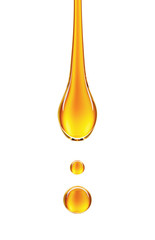Balsam Turpentine Oil – Ancient Wisdom New Discovered
In the quest for holistic healing and natural remedies, ancient knowledge often resurfaces to provide valuable insights into traditional practices. For example, Balsam turpentine oil, a resinous substance derived from various tree species, has recently gained attention as a potent therapeutic agent. Drawing upon centuries-old wisdom, balsam turpentine is coming back into the modern world, offering a range of health benefits and wellness applications. This blog article will explore the historical significance, extraction process, and diverse applications of balsam turpentine, shedding light on its newfound popularity.
Historical Significance:
 Balsam turpentine oil has a rich historical background, deeply intertwined with the development of ancient civilizations. This resin held great cultural and medicinal significance from the Egyptians and Greeks to the Mayans and indigenous cultures worldwide. Ancient texts and records highlight its use in various healing rituals, wound care, and spiritual practices. The wisdom surrounding balsam turpentine oil has been passed down through generations, emphasizing its therapeutic potential.
Balsam turpentine oil has a rich historical background, deeply intertwined with the development of ancient civilizations. This resin held great cultural and medicinal significance from the Egyptians and Greeks to the Mayans and indigenous cultures worldwide. Ancient texts and records highlight its use in various healing rituals, wound care, and spiritual practices. The wisdom surrounding balsam turpentine oil has been passed down through generations, emphasizing its therapeutic potential.
Extraction and Sourcing:
The production of high-quality balsam turpentine oil requires careful extraction and sourcing techniques. The resin is primarily obtained from resinous forests, where trees exude sap rich in beneficial compounds. Regions known for their abundant tree populations, such as Ukraine, Russia, France, and Austria, are key sources of balsam turpentine oil. Skilled artisans employ traditional methods to extract the resin, ensuring its purity and preserving its therapeutic properties.
Medicinal Applications and Health Benefits:
Balsam turpentine oil boasts a wide range of medicinal applications and health benefits, making it a versatile natural remedy. Its anti-inflammatory, antimicrobial, and analgesic properties effectively relieve various ailments. Here are some of the notable uses of balsam turpentine oil:
a. Respiratory Health: Balsam turpentine can help alleviate symptoms of respiratory conditions such as cough, bronchitis, and congestion. Inhalation or steam therapy with balsam turpentine oil can relieve and promote clearer breathing.
b. Joint and Muscle Pain: Applying balsam turpentine oil topically can help soothe joint and muscle pain. It penetrates deep into the tissues, reducing inflammation and providing a warming effect that promotes relaxation and pain relief.
c. Skin Conditions: Balsam turpentine’s antiseptic and antimicrobial properties make it beneficial for treating various skin conditions, including cuts, wounds, rashes, and fungal infections. It can help cleanse and protect the skin, aiding healing.
d. Digestive Health: Balsam turpentine has been used traditionally to support digestive health. It can also aid in eliminating parasites, promoting detoxification, and alleviating symptoms of indigestion and bloating.
- Safe Usage and Precautions:
While balsam turpentine oil offers numerous health benefits, exercising caution and following recommended guidelines for safe usage is crucial. Here are some precautions to keep in mind:
a. Consultation: It is advisable to consult with a healthcare professional or naturopath before incorporating balsam turpentine oil into your health regimen, especially if you have underlying health conditions or are taking medications.
b. Dosage and Dilution: Following proper dosage instructions is essential to prevent adverse reactions. Start with small amounts and gradually increase if necessary. Diluting balsam turpentine in a carrier oil or other suitable mediums can help minimize skin irritation.
c. Allergies and Sensitivities: Individuals with known allergies or sensitivities to tree resins should exercise caution when using balsam turpentine oil. Patch testing on a small area of skin before widespread use is recommended.
d. Pregnancy and Nursing: Pregnant and nursing women should avoid using balsam turpentine oil unless specifically advised by their healthcare provider. It is important to prioritize the safety of both the mother and the baby.
e. High Blood Pressure: Individuals with high blood pressure should consult their doctor or therapist before using balsam turpentine. Adjustments to bathing times and amounts may be necessary to ensure safety.



I have been browsing on-line more than 3 hours as of late, yet
I never found any attention-grabbing article like yours.
It is lovely value enough for me. In my view, if all
website owners and bloggers made just right content as you did, the web will be a
lot more useful than ever before.
Thank you so much for your kind words! I’m thrilled to hear that you found my article valuable and attention-grabbing. It’s incredibly rewarding to know that the content resonated with you and provided value during your online browsing. Your encouragement truly means a lot to me. I’m committed to continuing to create high-quality content that adds value to readers like you. Let’s keep striving to make the web a more useful and enriching place for everyone. Thank you again for your support and encouragement!
I will right away grab your rss as I can’t to
find your email subscription hyperlink or e-newsletter
service. Do you have any? Please allow me recognize so that I could subscribe.
Thanks.
Hello!
Thank you for your interest, you should now find a popup for subscribing to the newsletter on the website.